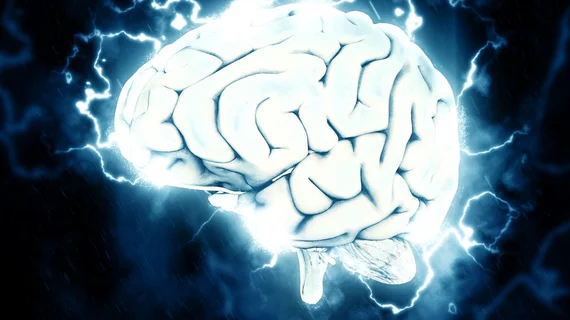Scientists have successfully treated a neuropathic leg pain patient with MRI-guided focused ultrasound for the first time in the United States as part of a new pilot study. Spearheaded by Dheeraj Gandhi, MBBS, of the University of Maryland School of Medicine (UMSOM) and the University of Maryland Medical Center (UMMC), the researchers used MRI to develop a “heat map” of the body that told them which pain-causing cells in the brain to destroy.
"We have pioneered a technique for high-resolution structural imaging of the thalamus and brain, which allows us to perfectly localize and target the nucleus responsible for amplifying the neuropathic pain network,” Gandhi said in a prepared statement.
Specifically, Gandhi and colleagues directed ultrasound waves through the skin and skull of the patient, Tammy Durfee, to focus on the central lateral nucleus of the thalamus—which functions as a messenger to the brain and relays motor and sensory signals to the cerebral cortex.
"If we can interrupt or carefully destroy the nucleus in the brain responsible for processing and amplifying pain signals, then we can disrupt this network and stop the neuropathic pain,” Gandhi said in the statement.
Durfee, of Kansas City, was diagnosed with cerebral dysrhythmia by a neurosurgeon and experienced severe pain in her hip. Despite various treatment approaches, she was unable to get relief.
Because the structure of each patient’s skull shape is different, patient-specific approaches must be employed. The patient's head was shaven so that physicians could get better access to her skull. The doctors also attached a metal frame to her head, which was then attached to the focused ultrasound transducer, helping convert sound energy to heat energy.
While focusing on the target using MRI, Durfee provided real-time feedback as to the amount of pain she was experiencing. Once they had the target, they increased the temperature and ablated the part of the brain that sent pain signals to her hip and leg. After the procedure, Durfee was able to dance.
At present, the treatment is only available for certain types of neuropathic pain, including sciatica, spinal cord injury and phantom limb. If the study is a success, the team will expand its research.

